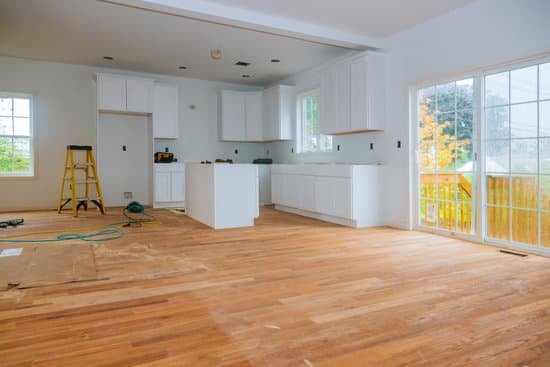Are you wondering, “Do home improvement loans work?” Home improvement loans can be a helpful financial tool for homeowners looking to renovate or upgrade their homes. Whether you’re considering a personal loan, a home equity loan, or a home equity line of credit, these options can provide the necessary funds to make your home improvement dreams a reality.
In this article, we’ll explore the various types of home improvement loans available and how they work. We’ll also discuss the pros and cons of taking out a home improvement loan, as well as the eligibility requirements and tips for choosing the right loan for your specific needs. Additionally, we’ll share real-life case studies of individuals who have successfully used home improvement loans to enhance their living spaces.
By the end of this article, you’ll have a better understanding of whether home improvement loans are a viable option for your upcoming renovation projects. So let’s dive in and learn more about how home improvement loans can help you achieve your desired upgrades while maintaining financial stability.
Types of Home Improvement Loans
When considering a home improvement project, one of the first steps is to research the different types of home improvement loans available. Understanding the various options will help homeowners make an informed decision based on their financial situation and the scope of their renovation plans. Here are the main types of home improvement loans to consider:
- Personal Loans: Personal loans are unsecured loans that can be used for a variety of purposes, including home improvements. They are typically offered by banks, credit unions, and online lenders. The loan terms, interest rates, and borrowing limits can vary widely depending on the lender and the borrower’s creditworthiness.
- Home Equity Loans: A home equity loan allows homeowners to borrow money using their home as collateral. These loans typically have fixed interest rates and set repayment terms. With a home equity loan, borrowers receive a lump sum payment that can be used for large renovation projects or other expenses.
- Home Equity Lines of Credit (HELOC): HELOCs also use the borrower’s home as collateral but work more like a credit card with a revolving line of credit. Borrowers can draw funds as needed up to a certain limit and only pay back what they use. HELOCs often have variable interest rates and a draw period followed by a repayment period.
Each type of loan has its own advantages and drawbacks, so it’s important for homeowners to compare the options carefully before making a decision. Additionally, eligibility requirements and approval processes may differ between lenders, so it’s advisable to shop around and obtain multiple quotes before committing to a specific loan product.
How Do Home Improvement Loans Work
Understanding the Application Process
When it comes to home improvement loans, the application process typically involves several steps. First, the borrower must determine the type of loan that best suits their needs. This could include a personal loan, a home equity loan, or a home equity line of credit. Once a decision is made, the borrower will need to gather all necessary documentation, such as proof of income, credit history, and details about the planned renovations.
Obtaining Approval and Funding
After submitting the application and required documents, the lender will review the borrower’s financial information to determine eligibility. Factors such as credit score and debt-to-income ratio play a significant role in this assessment. If approved for the loan, the borrower can then proceed with obtaining funds for their home improvement project. The disbursement process varies depending on the type of loan selected but generally involves receiving a lump sum or accessing a line of credit as needed.
Repayment Terms and Timeline
It is crucial for borrowers to understand the repayment terms associated with their home improvement loan. This includes details such as interest rates, monthly payment amounts, and overall timeline for repayment. Some loans may have fixed interest rates and set monthly payments, while others may offer more flexibility in payment schedules. Additionally, borrowers should factor in any potential penalties for early repayment or missed payments when considering their options.
By familiarizing themselves with the process of applying for and obtaining a home improvement loan, individuals can make informed decisions about financing their renovation projects. Whether it’s upgrading a kitchen or adding an extra room, having a clear understanding of how these loans work can help homeowners navigate through this financial endeavor successfully.
Pros and Cons of Home Improvement Loans
When considering taking out a home improvement loan, it is important to carefully weigh the advantages and drawbacks associated with this financial option. One of the main benefits of home improvement loans is that they provide homeowners with the necessary funds to complete renovation or remodeling projects without having to deplete their savings.
Additionally, some home improvement loans offer relatively low interest rates, making them an attractive alternative to using high-interest credit cards or personal loans. For those who are looking to increase the value of their property, investing in home improvements through a loan can be a smart financial decision.
On the other hand, one of the main drawbacks of home improvement loans is that they add debt to your overall financial liabilities. It’s important to consider whether you will be able to comfortably manage monthly payments on top of any existing mortgage and other debts.
Additionally, some home improvement loans may come with upfront fees and closing costs which can increase the overall cost of borrowing. It is essential for homeowners to carefully assess their financial situation and determine whether taking out a loan for renovations aligns with their long-term financial goals.
In summary, while home improvement loans can provide valuable financial support for renovation projects, it is crucial for homeowners to thoroughly evaluate both the benefits and drawbacks before committing to this type of financing. Understanding the potential advantages and disadvantages will enable individuals to make an informed decision about whether a home improvement loan is the right choice for their specific circumstances.
| Advantages | Drawbacks |
|---|---|
| Provide necessary funds without depleting savings | Adds debt to overall financial liabilities |
| Some offer low interest rates | Potential upfront fees and closing costs |
| Can increase property value | Monthly payments must be managed alongside existing debts |
Eligibility and Requirements
Criteria for Eligibility
To qualify for a home improvement loan, borrowers typically need to meet certain criteria. This may include having a good credit score, a steady income, and a manageable debt-to-income ratio. Lenders also consider the loan-to-value (LTV) ratio, which is the percentage of the appraised value of your home that you can borrow against. Meeting these eligibility requirements can increase your chances of being approved for a home improvement loan.
Documents Needed
When applying for a home improvement loan, borrowers are usually required to provide various documents to verify their income, assets, and employment status. These may include pay stubs, tax returns, bank statements, and proof of homeowners insurance. Additionally, you will need to provide details about the renovation project you intend to undertake, such as cost estimates and contractor agreements.
Other Considerations
In addition to meeting specific eligibility criteria and providing necessary documentation, borrowers should be prepared to discuss their credit history and financial situation with potential lenders. It’s important to be honest and transparent during the application process to ensure that you receive the best possible loan terms. Keep in mind that each lender may have slightly different requirements, so it’s advisable to research multiple options before making a decision on where to apply for your home improvement loan.
Tips for Choosing the Right Loan
When selecting a home improvement loan, it’s important to consider the specific needs of your project and your financial situation. Personal loans are a popular choice for smaller projects or for those who don’t have much equity in their home. They offer flexibility in terms of usage and can be obtained relatively quickly. However, they often come with higher interest rates compared to other loan options.
For larger projects, home equity loans or home equity lines of credit (HELOCs) may be more suitable. These types of loans use your home as collateral, allowing you to borrow larger amounts at lower interest rates.
Home equity loans provide a lump sum upfront, while HELOCs act as a line of credit allowing you to withdraw funds as needed. It’s essential to carefully assess the estimated cost of your project and compare it with the loan terms to ensure you choose the most advantageous option.
Another aspect to consider when choosing the right loan is your credit score and income stability. Lenders will review these factors to determine your eligibility and the interest rate you qualify for. A higher credit score typically results in more favorable loan terms, so it may be beneficial to take steps to improve your credit before applying for a home improvement loan.
| Tips for Choosing the Right Loan | Offering Advice on How to Select the Best Loan Option for Specific Home Improvement Projects |
|---|---|
| Consider project size and type | Assess whether a personal loan or a home equity loan/HELOC is more suitable based on the scope of your project |
| Evaluate cost versus loan terms | Compare the total amount needed for your project with the repayment terms and interest rates offered by different loans |
Case Studies
When it comes to home improvement, many individuals have successfully used home improvement loans to renovate their homes. These real-life examples serve as proof that these types of loans can be a valuable financial resource for those looking to make upgrades and enhancements to their living spaces. Here are some inspiring case studies of individuals who have benefited from home improvement loans:
- John and Sarah Smith: The Smiths wanted to remodel their outdated kitchen but didn’t have the funds to cover the costs upfront. After researching their options, they decided to apply for a personal loan specifically designed for home improvements. With the help of this loan, they were able to create the kitchen of their dreams, complete with new appliances, countertops, and flooring.
- Mike and Emily Johnson: The Johnsons were in need of additional space for their growing family and considered adding an extension to their home. They opted for a home equity line of credit (HELOC) which allowed them to borrow against the equity in their property. This loan enabled them to build an extra bedroom and bathroom without having to take out a second mortgage.
- Lisa Martinez: Lisa had been wanting to update her bathroom for years but was hesitant about taking on more debt. After learning about the advantages of using a home equity loan for renovations, she decided to move forward with her project. Thanks to the loan, Lisa was able to transform her outdated bathroom into a luxurious spa-like retreat.
These case studies demonstrate how home improvement loans can empower homeowners to make necessary upgrades and changes without having to deplete their savings or delay projects indefinitely. Each individual was able to achieve their renovation goals and improve the overall value and functionality of their homes with the help of these specialized loans.
Conclusion
In conclusion, home improvement loans can be a viable option for homeowners looking to renovate their properties. These loans provide a convenient way to finance projects that can increase the value and comfort of a home. Whether it’s through personal loans, home equity loans, or home equity lines of credit, there are various options available to suit different financial situations and renovation needs.
It’s important to weigh the pros and cons of home improvement loans before making a decision. While these loans can provide the necessary funding for renovations, they also involve interest rates and potential fees that need to be carefully considered. Additionally, meeting the eligibility criteria and providing the required documents may be a hurdle for some individuals.
Ultimately, whether or not home improvement loans are a viable option depends on individual circumstances and preferences. For those who have solid financial stability and a clear renovation plan, a home improvement loan can be an effective tool for achieving their property enhancement goals. However, it’s crucial to conduct thorough research and seek professional advice when considering this financing option.
Frequently Asked Questions
Are Home Improvement Loans a Good Idea?
Home improvement loans can be a good idea for homeowners who want to make significant renovations or repairs to their homes but may not have the cash on hand to cover the costs upfront. These loans can provide a way to finance these projects without having to rely on high-interest credit cards or deplete savings accounts.
What Are the Pros and Cons of a Home Renovation Loan?
The pros of a home renovation loan include the ability to fund necessary home improvements without draining your savings, potentially increasing the value of your home, and the potential tax-deductible interest on the loan.
However, there are cons as well, such as the additional debt and interest payments, potential decrease in home equity if property values decline, and the cost and hassle of obtaining the loan.
What Is the Average Length of a Home Improvement Loan?
The average length of a home improvement loan typically ranges from 5 to 12 years, but some lenders offer longer terms depending on the amount borrowed and the borrower’s creditworthiness. Shorter terms may result in higher monthly payments but less interest paid overall, while longer terms may have lower monthly payments but more interest paid over time.
It’s important for borrowers to carefully consider their financial situation and goals when choosing the length of their home improvement loan.

I’m thrilled to have you here as a part of the Remodeling Top community. This is where my journey as an architect and remodeling enthusiast intersects with your passion for transforming houses into dream homes.





